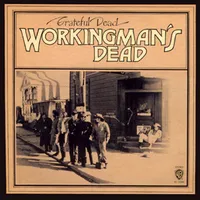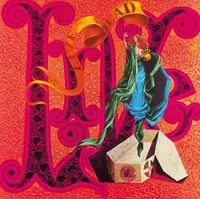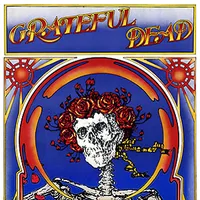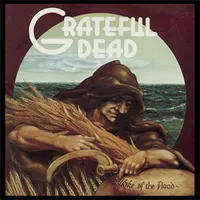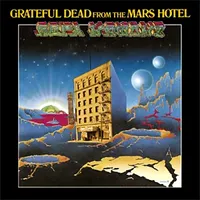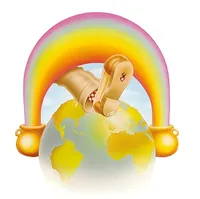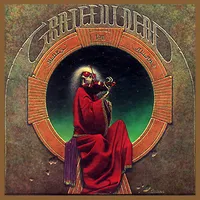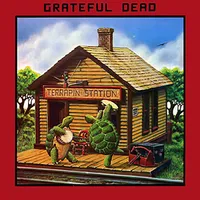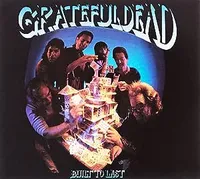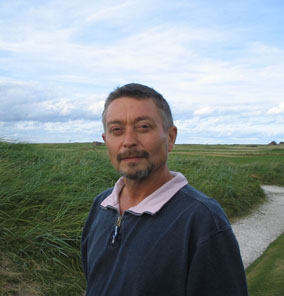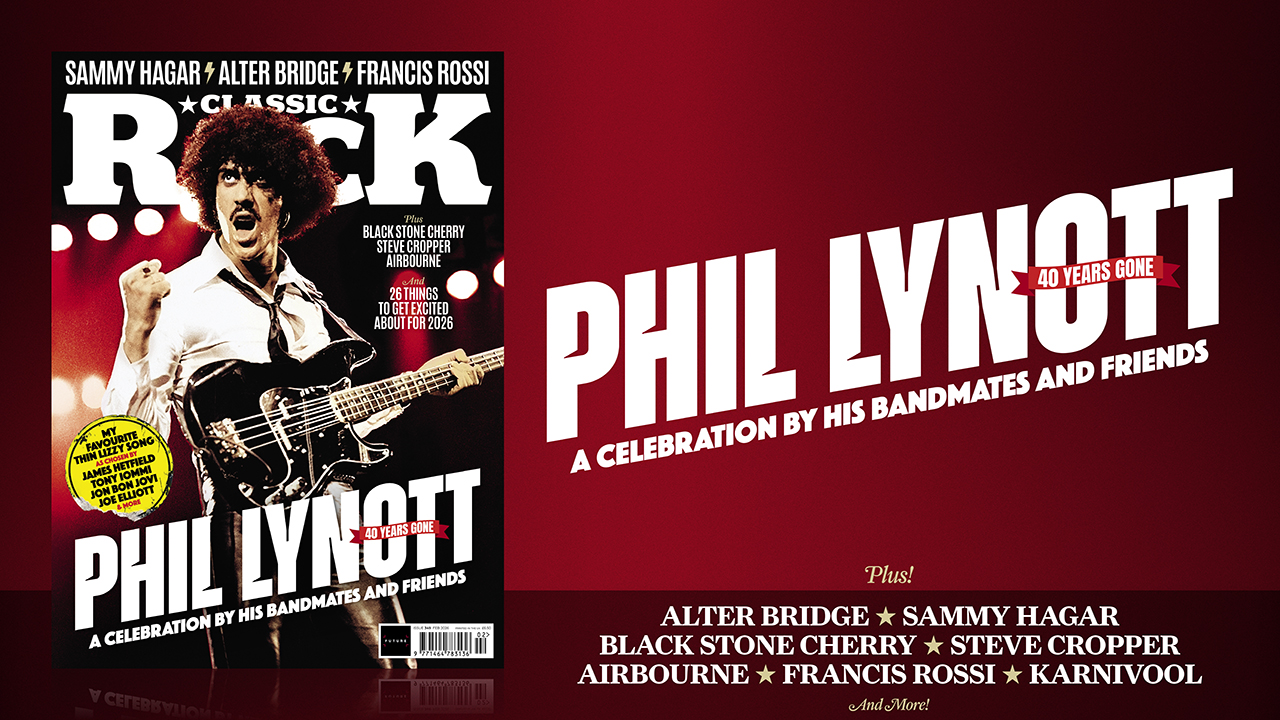The Grateful Dead albums you should definitely own
The Grateful Dead's best albums are a kaleidoscopic, loose-limbed, ever-adventurous alchemy of psychedelia, country, folk and blues
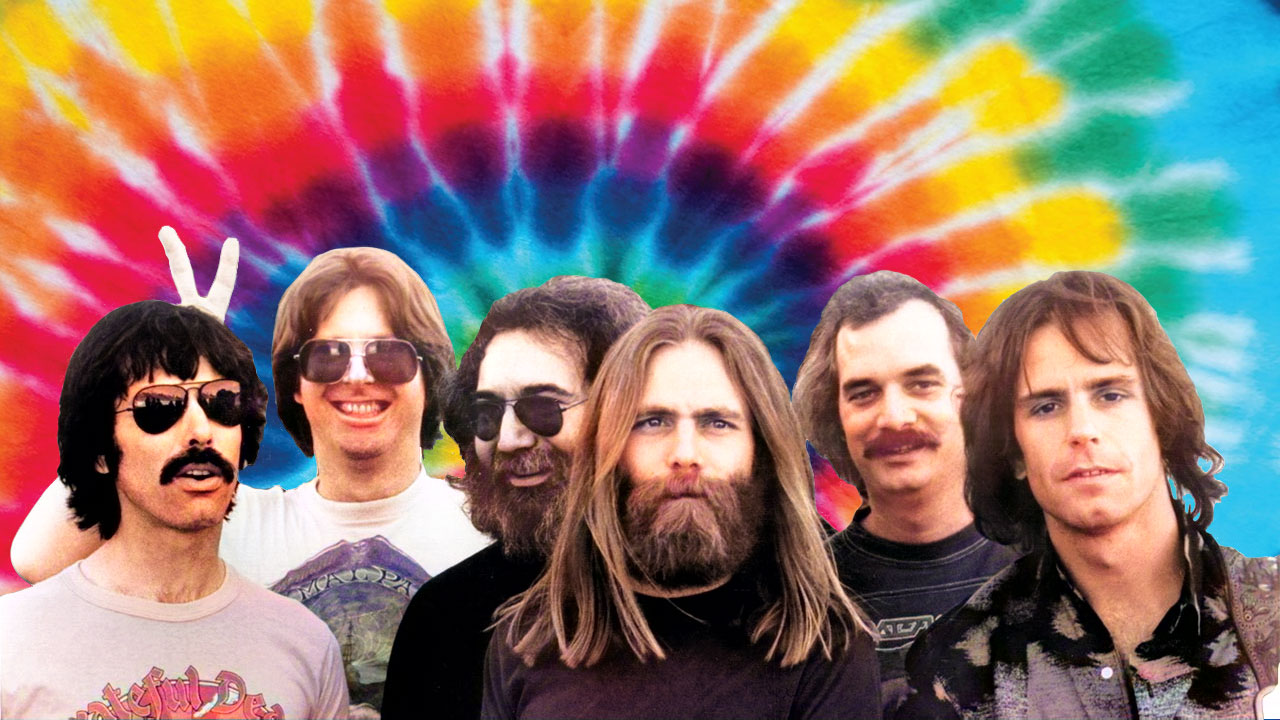
Jerry Garcia never wanted to be the poster boy for psychedelic, acid-drenched rock'n'roll. During their 1978 Egypt Acid Test he told this writer, "You're asking me whether the Grateful Dead still represents the ideals of the '60s, but we're trying to uphold something else. Not so much idealism, more a delicate state of anarchy: anarchy in the USA, I guess.”
Given the Dead’s MO, one where live performances were the Holy Grail and studio recordings a means to an end, making sense of their vast catalogue is problematic. There have been seventy odd retrospective/posthumous live releases since they called it a day at Soldier Field, Chicago (July 9, 1995) – Garcia died exactly a month later – yet their studio albums can be works of wonder, especially those from the early 70s.
The band’s legendary improvisations and the fact they probably played more live shows and for longer than anyone else only add to the enigma. When pushed Garcia said, “Labels are exploitative. I object to us being labelled purely a psychedelic band." Fair enough. They incorporated country, folk and blues, recorded with Bob Dylan, Kingfish, Merl Saunders, Wynton and Branford Marsalis.
The Dead honed their act as house band for Ken Kesey’s Merry Pranksters. Witnessing their early incarnation in that counter cultural maelstrom writer Tom Wolfe described the original Acid Tests in all their inspired glory. "(They) were one of those outrages, one of those scandals, that create a new life style or a new world view." The sound of the Dead "went down so many microphones and hooked through so many mixers and variable lags and blew up in so many amplifiers and roiled around in so many speakers and fed back down so many microphones, it came on like a chemical refinery."
The Dead embodied a commune lifestyle, first in the Haight-Ashbury, then in Marin County. They evolved from a psych garage band into an outfit that combined epic self-indulgence – in drug taking as well as music – with an ability to create succinct diamonds like China Cat Sunflower and Sugar Magnolia.
In-house writer Robert Hunter provided lyrics imbued with outlaw status, notably on the sepia-tinted mythic America of Workingman’s Dead. Hunter was still around when they’d become a juggernaut, playing vast fields to new generations. The Garcia-Hunter composition Touch Of Grey, recorded eight years before Jerry’s death was a swansong of sorts. They would get by; they would survive.

Workingman’s Dead (Warner Bros, 1970)
Following Aoxomoxoa’s experimental excursions the Dead went in search of roots and a Bakersfield country integrity that mined a land of pioneers and blue-collar ‘workingman’s’ soul. The musicians matched whatever flowed from Hunter’s pen, lashing considered harmonies to the bluegrass, mountain-flavoured Uncle John’s Band and the Dylan-inspired Dire Wolf.
Excess all areas was nowhere to be seen. Ron “Pigpen” McKernan growled the honours on Easy Wind and the ensemble went into overdrive on the finale, the railroad romping Casey Jones. Garcia, bassist Phil Lesh and Bob Weir were at their slickest on Cumberland Blues. They earned their pay packet.
American Beauty (Warner Bros, 1970)
Two classics in one year? Who said the Dead were lazy? After hanging with Crosby, Stills and Nash, Garcia realised his boys could own the mic sing too, albeit with a rougher edge that suited the country folk of the doom-laden Candyman.
Lesh’s Box Of Rain, a poignant eulogy to his dying father, brought him out-front, manna from heaven to the fans, while Weir was now a bona fide equal to Captain Trips. Sugar Magnolia and Truckin’ (whose lyric immortalised a band bust in New Orleans) reeked of newfound confidence. Friend Of The Devil is pick of a splendid bunch.
Live/Dead (Warner Bros-Seven Arts, 1969)
Their first live album, a double to boot, utilised the new-fangled 16-track recording that they took to Fillmore West and the Avalon Ballroom. The playing matched the immense sound quality. Signature psych out Dark Star was 23 minutes of sonic adventure; ditto St. Stephen and The Eleven, showcasing an infallible ability to drift the mood and all arrive at the same page.
Even Turn On Your Love Light and Death Don’t Have No Mercy, by the Reverend Gary Davis, chestnuts both, repaid all that roadwork. Original organist Tom Constanten bowed out here. Meanwhile the Dead’s horizons were about to change.
Grateful Dead (Warner Bros, 1971)
Untitled but known as Skull And Roses or Skull Fuck (Alton Kelley’s artwork launching the Dead Freak’s merchandising mania) this live double coincided with the band’s popularity on the East Coast. New Yorkers were treated to new marvels like the grooved up Bertha and the down-at-heel Wharf Rat.
There were fun and games on covers of John Phillips’ cautionary Me And My Uncle and a quick off the mark reading of Me And Bobby McGee. Weir and drummer Bill Kreutzmann added the free-form The Other One, first debuted on Anthem Of The Sun, an account of life with the Merry Pranksters.
Wake Of The Flood (Grateful Dead Records, 1973)
Pigpen’s recent passing and the addition of Keith and Donna Godchaux gave the Dead pause. They tested their new material in concert before decamping to The Record Plant in Sausalito where Garcia lashed the crew to the mast. They were in synch on Here Comes Sunshine and the mind-blown imagery in Eyes Of The World.
Weir threw down his marker, taking them into deep space on the three-part Weather Report Suite. Garcia’s guitar never sounded better, especially on firm favourite Stella Blue. Added horns, Vassar Clements’ violin, Matthew Kelly’s harmonica and Doug Sahm’s bajo sexto introduced a new modal quality.
From The Mars Hotel (Grateful Dead Records, 1974)
Going back to funky Folsom Street in San Francisco Garcia adapted his song Wave That Flag into the unusually political sideswipe U.S. Blues. As usual the musicians moaned about the constraints of the studio but they needn’t have, since Lesh’s Unbroken Chain, with synths from Ned Lagin, was majestically trippy while his country ballad Pride Of Cucamonga, with John McFee on pedal steel, was a rustic delight.
Garcia/Hunter’s China Doll had a deceptive nursery nightmare atmosphere. The cover art by Stanley Mouse of the actual Mars Hotel in Frisco may be their most psychedelic should you fancy picking up the tab.
Europe ‘72 (Warner Bros, 1972)
This time it’s a triple assault on Europe with shows captured at the Lyceum Theatre and the Empire Pool, L’Olympia in Paris, plus venues in Amsterdam and Copenhagen. Old meets new with the unveiling of Weir’s sublime Jack Straw and One More Saturday Night (already heard on his solo debut Ace) and Garcia’s return to roots on Cumberland Blues and Tennessee Jed.
The ailing Pigpen bowed out in style. His passionate reading of Elmore James’ Hurts Me Too is a standout. The band were on a high - when weren’t they? - and for obvious reasons this release chimes with British listeners.
Blues For Allah (Grateful Dead, United Artists, 1975)
The last great studio album, at least on side one, the Dead’s foray into Eastern philosophy on side two divided opinion. There are moments on Help On The Way/Slipknot! and Franklin’s Tower (Roll Away The Dew) that are as transcendental as anything in their repertoire.
Even Weir’s collaboration with lyricist John Barlow on The Music Never Stopped survived a vocal mauling from Donna Godchaux, who was never quite the Janis Joplin wannabe she’d imagined. Goes a tad off-kilter once they whip up a desert storm but hey, no one’s perfect. The album was recorded at Weir’s home studio in Mill Valley, California.
Terrapin Station (Arista, 1977)
A real oddity, this. Produced by Keith Olsen, the Dead agreed to be licked into shape with mixed results. Olsen’s addition of Paul Buckmaster’s strings to the courtly title track horrified the group - Garcia relented later; they weren’t enamoured of Tom Scott’s tacked-on sax for Weir’s otherwise incendiary funky rhythmic Estimated Prophet either.
Unused to outside interference as they were, the sonic clout of Lesh’s Passenger still stood up to scrutiny and Terrapin Station itself has a certain grandeur that justifies its seven-part composition. The Dead returned to live shows after a two-year hiatus, raring to go again.
...and one to avoid
You can trust Louder
Their final studio album was wrong on every count, from the clunky title and failed attempt to match In The Dark’s commercial success to the fact that keyboards player Brent Mydland not only co-wrote four songs, he sang them as well, to disastrous effect.
It wasn’t all hapless – Weir’s Victim Or The Crime was so-so, Garcia’s Standing On The Moon coasted on autopilot – but it didn’t sound as if anyone was engaged in the ruddy thing. Jerry’s increasing reliance on heroin was hardly a mitigating factor, though the admittedly popular Mydland was also an addict and died the following year.
Sign up below to get the latest from Classic Rock, plus exclusive special offers, direct to your inbox!
Max Bell worked for the NME during the golden 70s era before running up and down London’s Fleet Street for The Times and all the other hot-metal dailies. A long stint at the Standard and mags like The Face and GQ kept him honest. Later, Record Collector and Classic Rock called.
